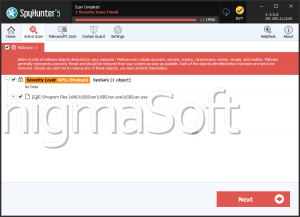SySS Ransomware
Ransomware threats have been plaguing online users for years. One of the most active ransomware families in 2019 has undoubtedly been the Dharma Ransomware family. The most recent data-locking Trojan, which belongs to this infamous ransomware family, is the SySS Ransomware. There has not yet been a free decryption tool released, which means that the victims of the SySS Ransomware are left with their hands tied for the moment.
Propagation and Encryption
If you browse low-quality websites, there is a higher chance that you may become a victim of ransomware. Threats like the SySS Ransomware are often distributed via fake application updates, pirated variants of popular software tools and torrent trackers. The most popular propagation method when it comes to ransomware, however, is probably spam email campaigns. Cyber crooks would tailor a fraudulent message and add an infected attachment, which, once opened, would compromise the system of their target. Once the SySS Ransomware has found its way into the infected host, it will scan the data and make sure to locate all the files, which match its criteria. The SySS Ransomware likely targets many of the popular file types and will make sure to target all your photos, videos, spreadsheets, presentations, databases, archives, documents and audio files. Then, the ransomware threat will execute its encryption process and lock all the targeted data. The SySS Ransomware applies a '.id When the SySS Ransomware is done encrypting your data, it will drop a ransom note. Its name is 'FILES ENCRYPTED.txt.' The note is not very thorough and does not mention what the ransom fee, which is demanded by the attackers, is. However, the authors of the SySS Ransomware insist on being contacted via email, and they have provided an email address for the victim – ‘syspentest@aol.com.'
<3>The Ransom Note
It is best to avoid cooperating with cyber crooks. They will promise to send you the decryption key you need if you pay up, but more often than not, they do not deliver on this promise, and users are left empty-handed. This is why you should wipe off the SySS Ransomware from your computer using a reputable anti-malware application, which will also keep your system safe going forward.



